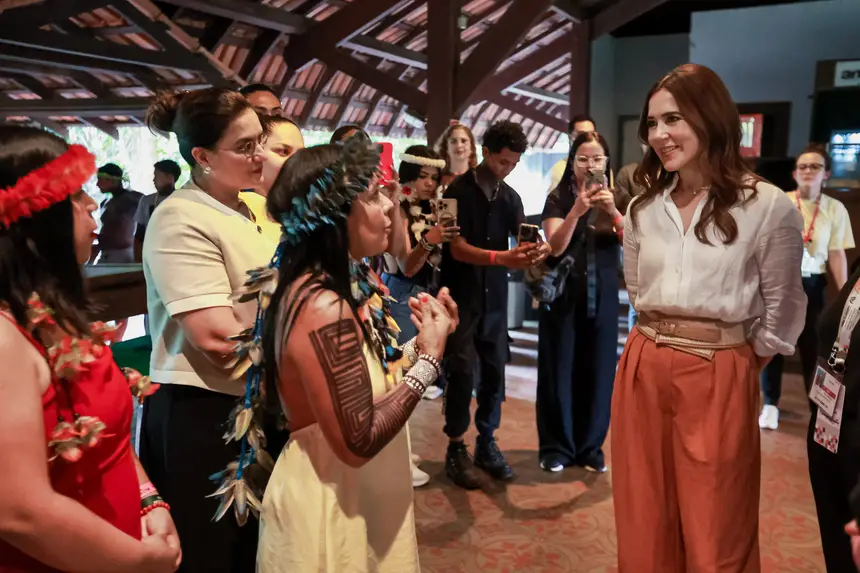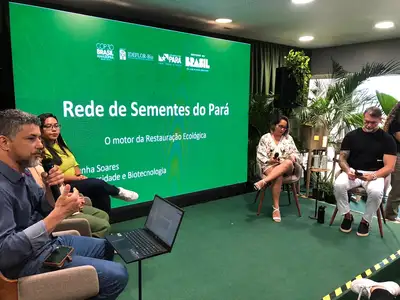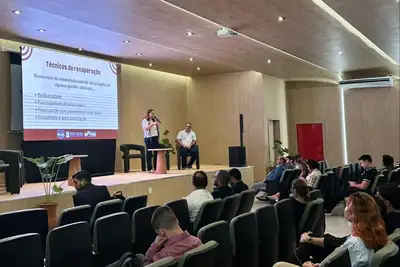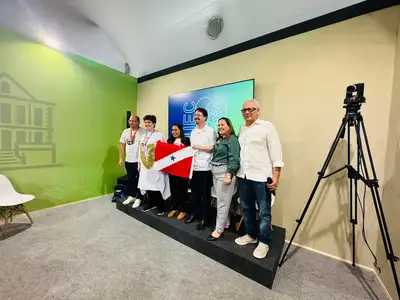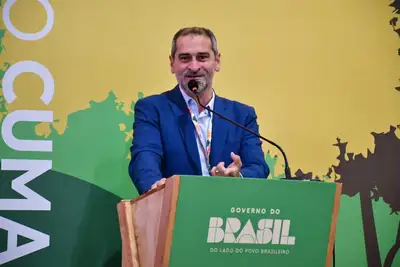Queen of Denmark visits Utinga Park and learns about the Verônica Tembé Memorial, a symbol of indigenous resistance in the Amazon
The visit was part of the monarch's activities during her time in Pará, in the context of the United Nations Conference on Climate Change, COP30

Queen Mary Donaldson, also known as Maria of Denmark, visited the Utinga Camillo Vianna State Park in Belém on Wednesday (12), in an agenda marked by the appreciation of indigenous culture and the exchange of experiences on environmental conservation and sustainability. The visit was part of the monarch's activities during her time in Pará, in the context of the United Nations Conference on Climate Change, COP30.
The royal entourage was welcomed by the State Secretary of Culture, Ursula Vidal; the State Secretary of Indigenous Peoples, Puyr Tembé; and the manager of the Administrative Region of Belém of the Institute for Forest Development and Biodiversity of Pará (Ideflor-Bio), Júlio Meyer. Representatives from the National Articulation of Indigenous Women Warriors of Ancestry (Anmiga) also participated in the reception, presenting to the queen the work of indigenous women in defense of the forest and the climate.
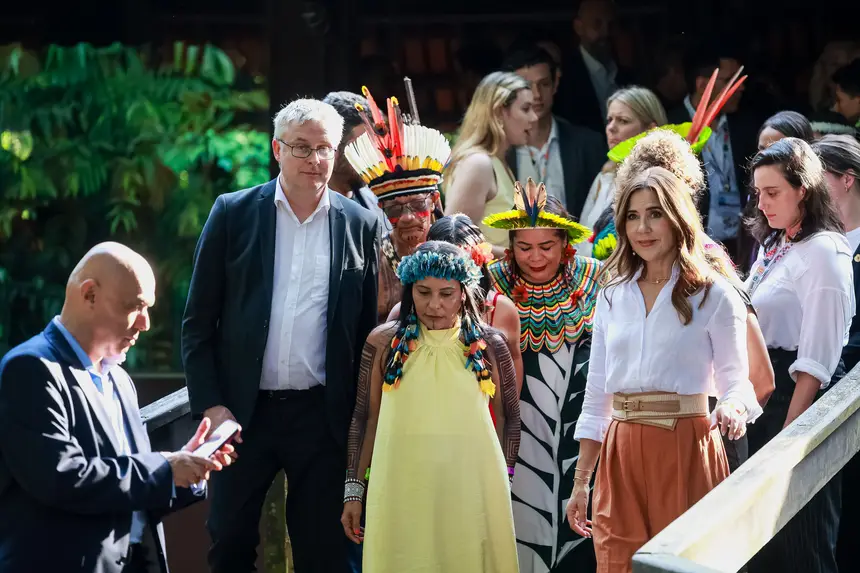
During the visit, Queen Mary learned about the Verônica Tembé Memorial, a space for welcoming and enjoying the indigenous cultures of Pará, located within the Utinga State Park. The memorial honors Verônica Tembé, the first Tembé-Tenetehara chief and one of the main indigenous leaders of Pará, whose struggle was decisive for the homologation of the Alto Rio Guamá Indigenous Land (TIARG) in 1993. The space houses an exhibition with more than 1,480 pieces from western Pará, safeguarded by the Integrated System of Museums and Memorials (SIMM/Secult).
Delighted with the visit, Queen Mary attended a cultural presentation by indigenous people of the Tembé ethnicity, who shared dances, songs, and narratives about their history and ancestry. The moment was marked by emotion and recognition of the resistance journey of the indigenous peoples of the Amazon, especially the women who keep alive the cultural and spiritual heritage of their communities.

Appreciation - For the State Secretary of Culture, Ursula Vidal, the presence of the European monarch reinforces the importance of intercultural dialogue and giving visibility to indigenous female leadership. “Queen Mary Elizabeth was very enchanted by this space for environmental protection and the museum dedicated to the ethnography of the peoples of the Amazon, which honors an inspiring woman, Verônica Tembé. This leadership inspires other women and the struggle for the demarcation of territories, for the maintenance of culture and life,” she highlighted.

The State Secretary of Indigenous Peoples, Puyr Tembé, emphasized that the meeting symbolizes the strength of resistance and the role of indigenous women in the global climate agenda. “It was very important to present to the queen the story of Verônica Tembé and the struggle of a people that defends the forest. In the context of COP30, this visit strengthens our voice. The answer to climate change lies in the demarcated territories. We need international support to ensure the life of the forest and humanity,” she stated.
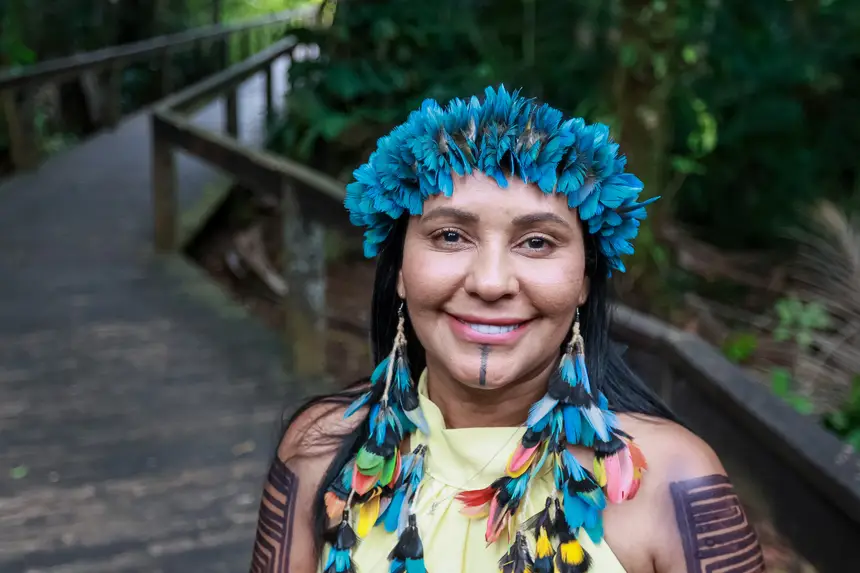
After visiting the memorial, Queen Mary visited the lookout at the Água Preta lake, one of the water sources responsible for 70% of the supply for the Metropolitan Region of Belém, accompanied by manager Júlio Meyer, who presented the conservation projects developed by Ideflor-Bio. “The queen's visit was an opportunity to show the role of the State and the Institute in protecting biodiversity. We talked about the importance of indigenous lands and conservation units, which together protect more than 50% of Pará's territory. She showed great interest in our fauna, especially the birds and the biodiversity of the lake, one of the largest in urban parks in the world,” he said.

Meyer also emphasized that the royal visit reinforced the relevance of Pará as a global showcase for environmental conservation and the protagonism of indigenous peoples. “By uniting tradition, culture, and sustainability, the meeting at Utinga Park symbolized the common commitment between Brazil and Denmark in defending life and confronting the climate crisis, a message that resonates even more strongly during COP30, when the world is looking at Belém and the Amazon,” concluded the manager.



